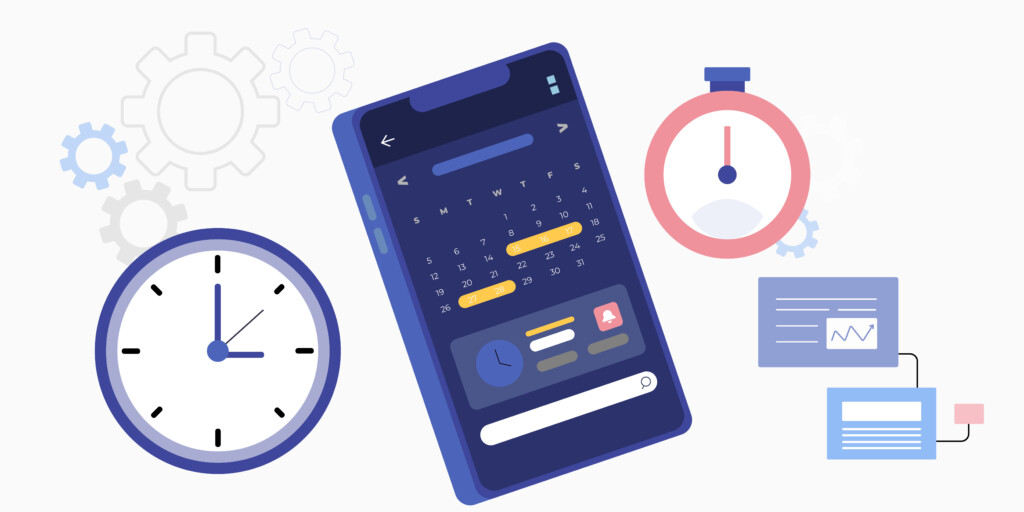

From famous investors and business leaders to athletes to artists, every indefatigable person has had to learn to manage their time effectively. For example, Jack Dorsey, the co-founder of Twitter, schedules his entire week in five-minute increments for different activities, such as meetings, exercise, and meditation. Despite leading two major companies (Twitter and Square), Dorsey even found time to pursue personal interests like writing and travel. That’s what effective time management gets you.
Traders can learn a lot from hard-working people like Dorsey. In the fast-paced trading world, you may find it overwhelming and challenging to monitor the markets, analyze data, and make trades. Besides, you may have other commitments in addition to trading. However, the good news is that there are strategies to help you.
Align your trading style with available time

Different trading styles require different levels of time commitment. If you force yourself into a particular style in your schedule, you may end up feeling overwhelmed and burnt out. For example, day trading isn’t suitable for traders who have limited time. If you have a full-time job or family responsibilities, swing trading will be a better style for you.
You should be realistic about the time you have available, and this will instantly make time management easier.
Track your time and use time blocking
Do you know how much time you’re spending on key trading activities? If not, prepare time logs for market analysis, research, decision-making, and trade execution. It’s not necessarily done to identify inefficiencies (although you can do that, too) but to understand your behavior better.
With that information in mind, plan specific blocks of time for different trading activities. You can schedule an hour for market analysis in the morning and follow it up with a focused block of time for trade execution in the afternoon.
Focus on high-value activities
Another aspect of time management is not getting caught up in the day-to-day tasks and losing sight of what really matters.
High-value activities are things like market analysis, developing and testing trading strategies, and building relationships with industry experts. The logical conclusion is that you should dedicate more time to these tasks.
Low-value activities, on the other hand, may involve something like checking social media or reading news that are not relevant to your trading strategy. Here, you should set strict boundaries, however tempting they may be.

Use technology to your advantage

Here is how you can optimize your workflow and free up more time for high-value activities:
- Calendar and scheduling apps – to organize your day, set reminders for important tasks, and avoid double-booking or missing important events
- Time-tracking apps – to understand how you’re spending your time and identify areas where they can be more productive
- Trading platforms and automation tools – to automate repetitive tasks like trade execution, order placement, and risk management
- Communication tools – to stay connected with colleagues, clients, and industry experts
Take advantage of downtime
The time between trades is your opportunity to improve skills, gain knowledge, and prepare for future trades.
Let’s say you’ve just placed a trade, and now you’re waiting for the market to move in your favor. Now is a quieter moment to review charts and technical indicators, analyze economic data, and monitor news and events that may impact the markets. Even if it’s not for something productive, use this time wisely.
Use time-saving shortcuts
It can be something as simple as keyboard shortcuts. For example, you can use the F1 key to open a new order ticket or the F2 key to close an existing position. Some trading platforms also offer the one-click trading feature, which does exactly what you’d expect – execute trades with just one click.
You can take it a step further and save time by predefining your trading parameters. Have templated with your preferred chart settings, indicators, and trading strategy. Just remember that shortcuts should not replace a thorough analysis and a solid trading strategy.
Schedule time for learning

Learning can be a powerful tool for improving your time management skills. As you learn more about the markets, you will be able to better identify the key factors that drive price movements. You’ll then focus on those factors when analyzing market data and avoid wasting time on irrelevant information.
Why schedule? Ironically, without a dedicated time block, you may not find the time to study otherwise. So, stay focused and keep learning!
Sources:
How to choose a trading style that suits your personality, The Balance Money
How to use time blocking to manage your day, Verywell Mind
11 ways to work full time and study full time simultaneously, Cornerstone University







